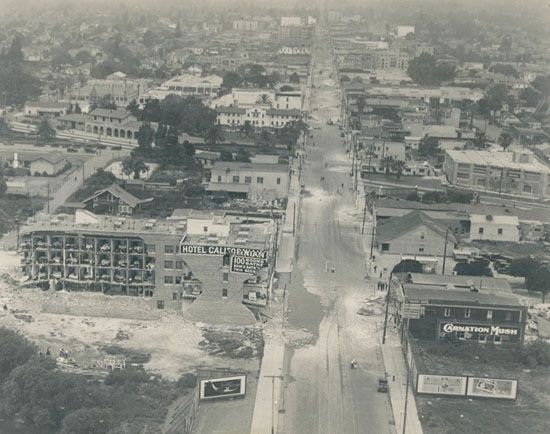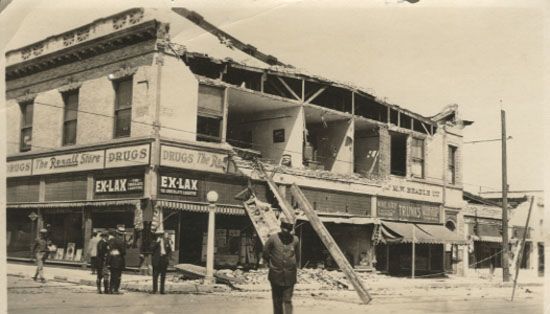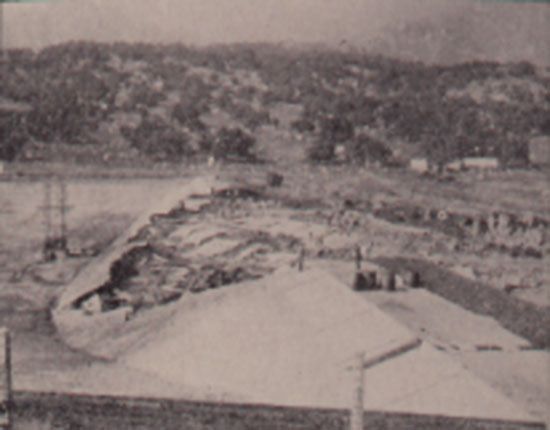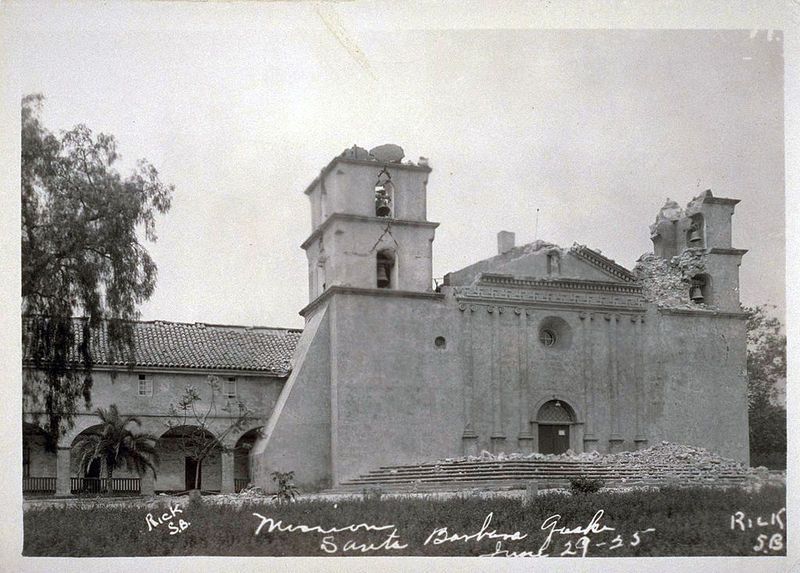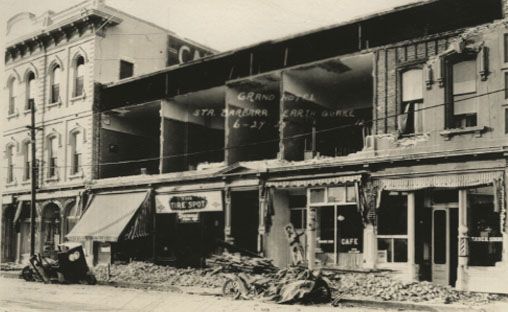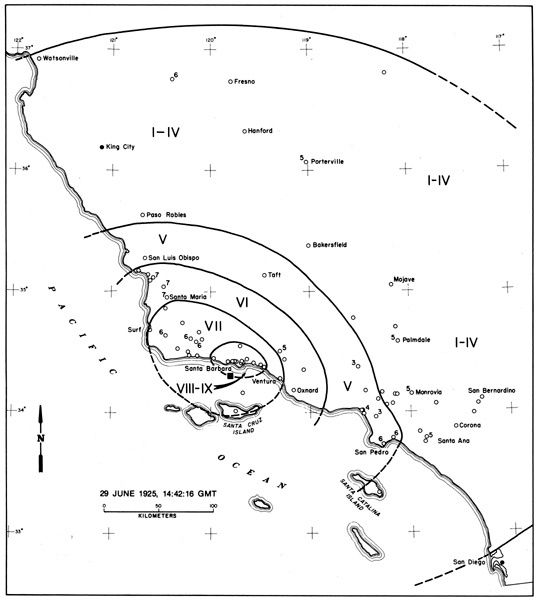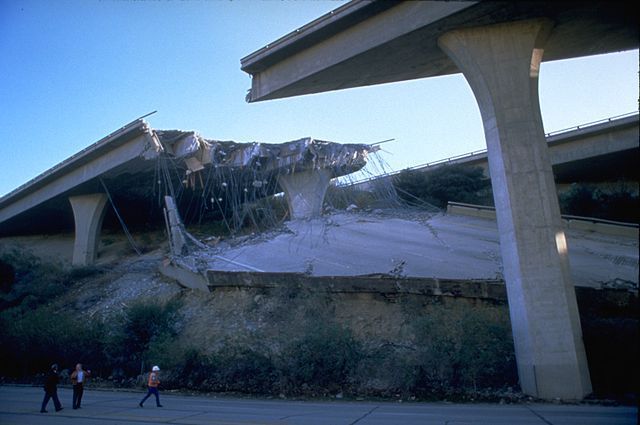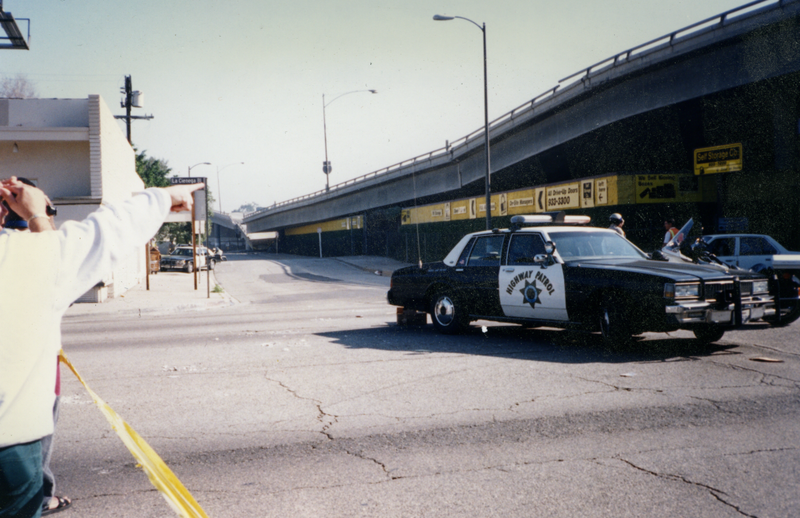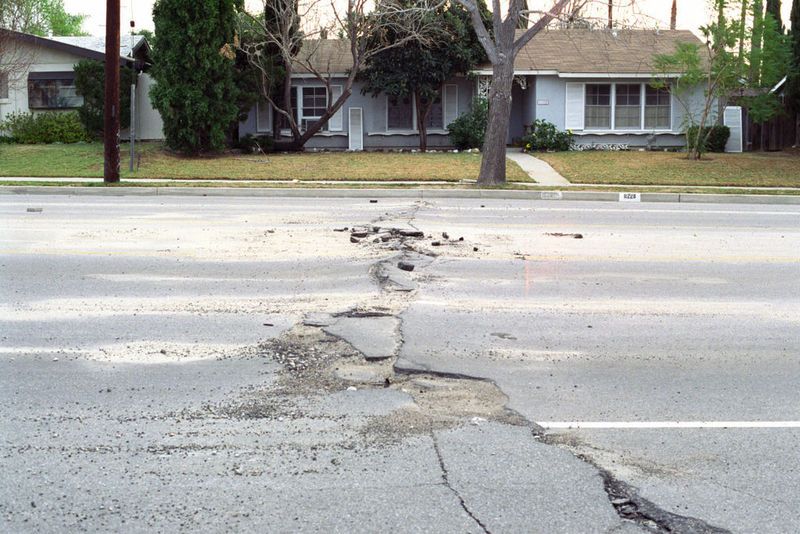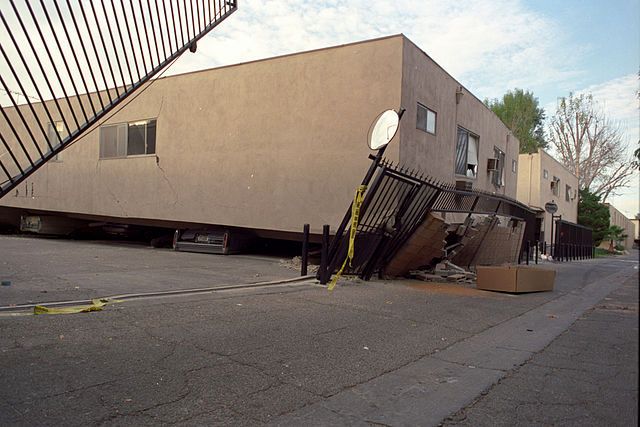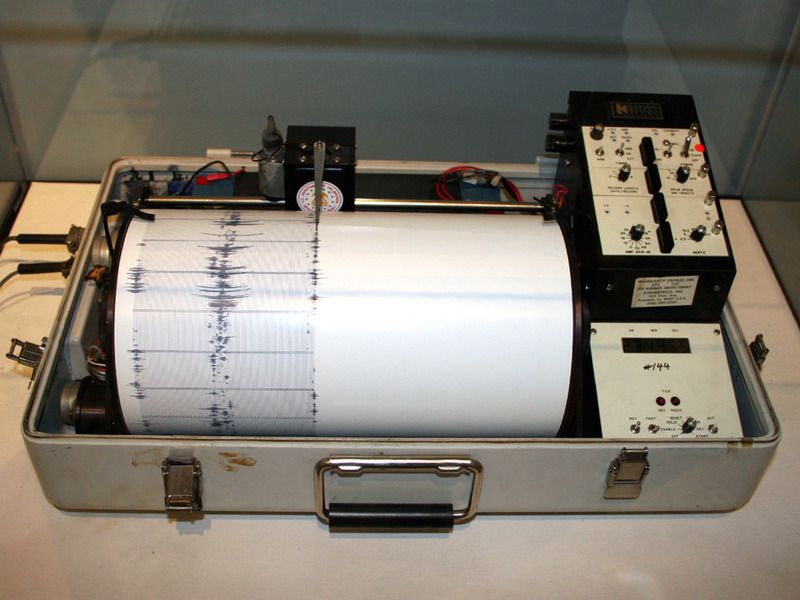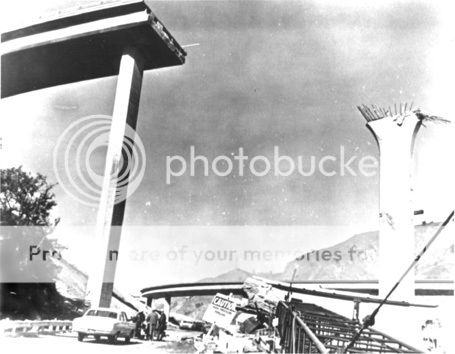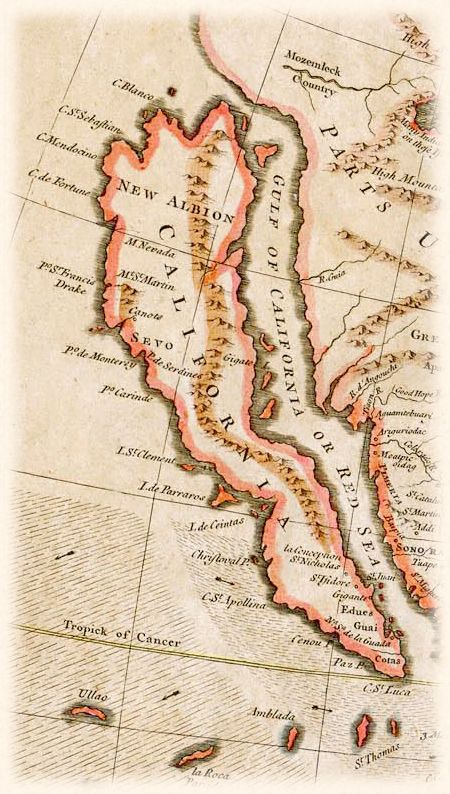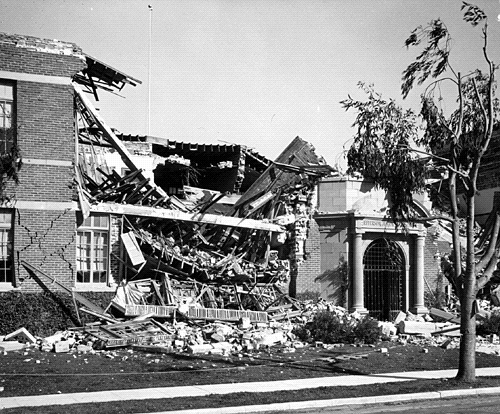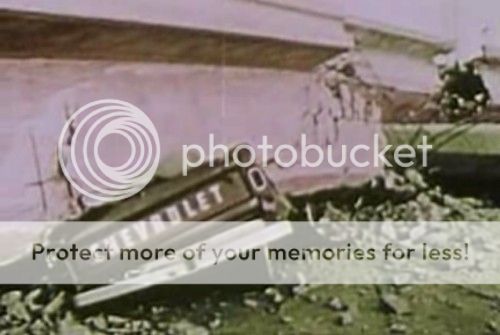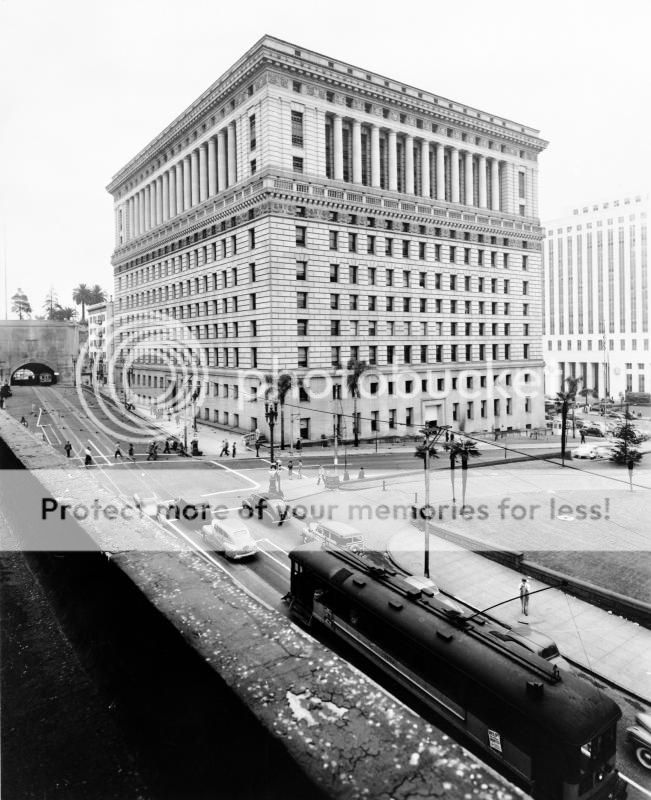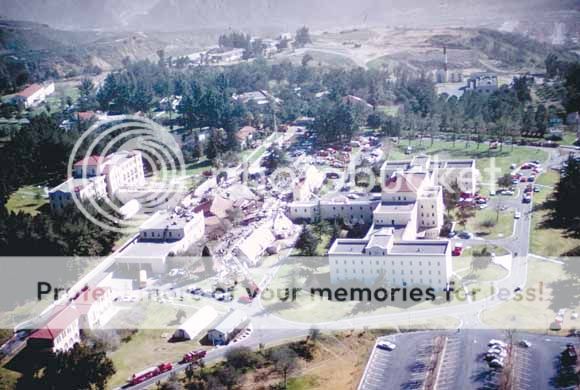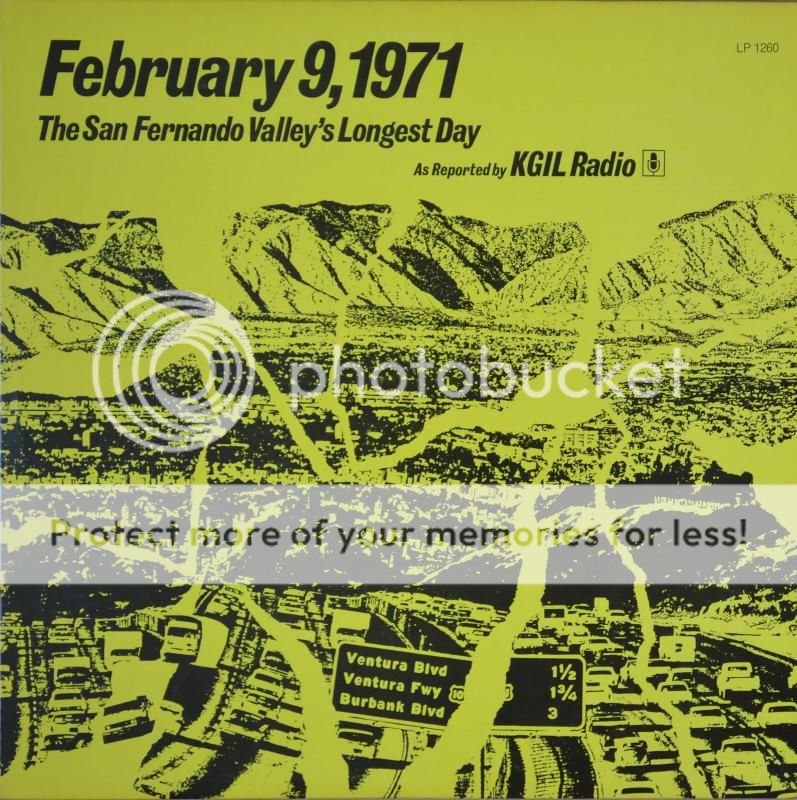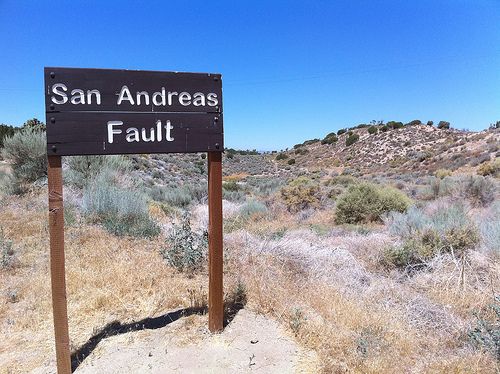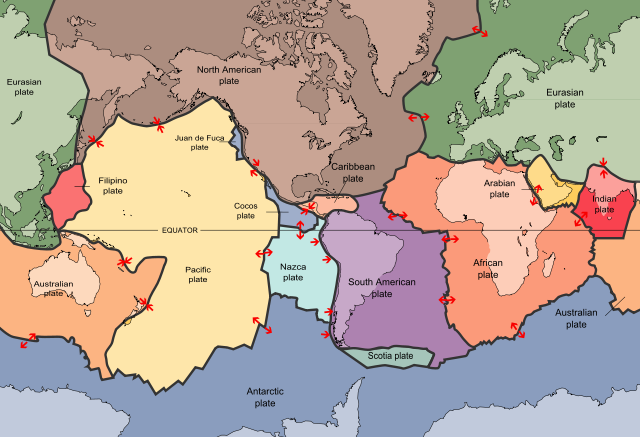THE HOT MOJAVE DESERT IN SAN BERNARDINO COUNTY - Little earthquakes, many of them very little earthquakes, shake Southern California everyday. However, it was on June 28, 1992, on which the largest county in the lower 48 states was the epicenter of the largest earthquake in California in about 40 years. Though not a lot of spectacular, memorable damage was done, there were a lot of lessons learned from this earthquake.

Probably the most noticeable damage following the 1992 earthquake was this bowling alley in Yucca Valley. Photograph taken by the National Oceanic and Atmospheric Administration and in public domain.
Waking Southern California up on a Sunday morning at 4:57 a.m. in the very busy year of 1992 here are seven interesting facts about the earthquake commonly known as, "The Landers Earthquake."
1 - It Still Remains The Last Largest Earthquake In California
It has been over 20 years and the Landers Earthquake was, according to the moment magnitude scale (M), a M7.3 earthquake, and (as of this writing) retains the record as being the last large earthquake, by way of magnitude, to hit California. Prior to the 1992 event the last large earthquake to hit California was the 1952 Kern County Earthquake, which occurred near Wheeler Ridge on the (thought to have been inactive) White Wolf Fault, and was M7.3. After the Landers Earthquake the next closest earthquake in magnitude size was the 1999 Hector Mine Earthquake at M7.1.
Even though this earthquake was rather big, it was not "The Big One." In fact, "The Big One" is expected to be M7.8-8.0.
As paleoseismology has shown this record held by the Landers Earthquake will likely be broken at some point.
2 - There Was A Lot Of Fault Involved
Rather, lot of faults were involved. The Landers Earthquake did not just rupture on one single fault-line, but rather ruptured on five separate fault-lines: Johnson Valley, Landers, Homestead Valley, Emerson, and Camp Rock Faults, according to the Southern California Earthquake Data Center (SCEDC).
3 - A New San Andreas Fault Could Be Opening Up
That is the theory, at least, from Lawrence Berkeley National Laboratory (LBL) geologist Pat Williams. According to the LBL article that came out in August 1992:
A theory that was posed in the aftermath of last month's earthquakes was that a new San Andreas fault could be opening up from the Salton Sea north to central California. Williams says instead that the recent activity has linked the Gulf of California with slip systems east of Mount Whitney, the 1872 site of one of California's three historic magnitude 8.0 earthquakes.
Williams' theory is that the strain is heading toward the back side of the Sierras, northeast into central Nevada, where it may affect active geothermal fields. The earth's movement could enhance the production of geothermal fluids by contributing to a thinning of the crust and allowing the fluids to circulate through complex fractures.
A huge strain response on a scale never seen before occurred during the 24 hours following the Landers earthquake. At the Pinion Flats Observatory researchers from UC San Diego observed a massive redistribution of strain deep in the earth's crust. For the first time, Williams says, scientists will be able to study not just how the upper 12 kilometers of brittle crust reacts, but the response of the deep crust beneath it.
This theory is still being debated among geological and seismologists circles, and, frankly, it will probably take a few more large earthquakes to see if this theory is correct. The earth sciences is sometimes a game of wait and see.
4 - Did You Feel The Foreshock?
At the time nobody knew it was a foreshock to the Landers Earthquake, and in fact, there was concern this might have been a foreshock to a San Andreas Fault event, and that was a M6.1 foreshock that hit about 11 miles east of Desert Hot Springs on April 23, 1992. The Earth Day earthquake caused a moderate amount of property damage in the Palm Springs area. As this earthquake, called the Joshua Tree Earthquake, rolled through to Los Angeles at 9:50 p.m. a Dodgers' game was going on and Vin Scully broadcast the the rolling motion happenings at Chavez Ravine.
There was concern this could be a foreshock to a San Andreas' event, and, according to the SCEDC, "A San Andreas Hazard Level B was declared following this quake, meaning that a 5 to 25% chance existed for an even larger earthquake happening along the San Andreas fault within 3 days."
This made for some big headlines in L.A. media, but by April 29, 1992, this earthquake and the threat of the San Andreas Fault unleashing its fury would be forgotten, at least for a little while.
This foreshock had its own foreshock, a M4.6, a little over two hours earlier.
5 - Was The Big Bear Earthquake Really An Aftershock?
This was the Big Bear Earthquake broadcast live on CNN to the country and parts of the world.
The short answer, no.
This is a report of the earthquakes from KTVU-TV, Oakland/San Francisco, which includes on-air coverage from KTTV-TV as the Big Bear Earthquake shook the KTTV/Fox 11 newsroom at the now gone Metromedia Square in Hollywood.
At 8:05 a.m. on that Sunday morning a lot of people were already up and had already felt quite a few aftershocks, but one the largest, and probably most damaging, earthquake that morning was the Big Bear Earthquake. It was originally thought the M6.5 Big Bear Earthquake was simply an aftershock, and having an aftershock of that size following such a large earthquake is not unusual. However, as later research showed, the Big Bear event was not an aftershock of the Landers Earthquake. Rather, that earthquake in the San Bernardino Mountains was apart of a "regional earthquake sequence," according to the United States Geological Survey (USGS).
6 - Location And Magnitude
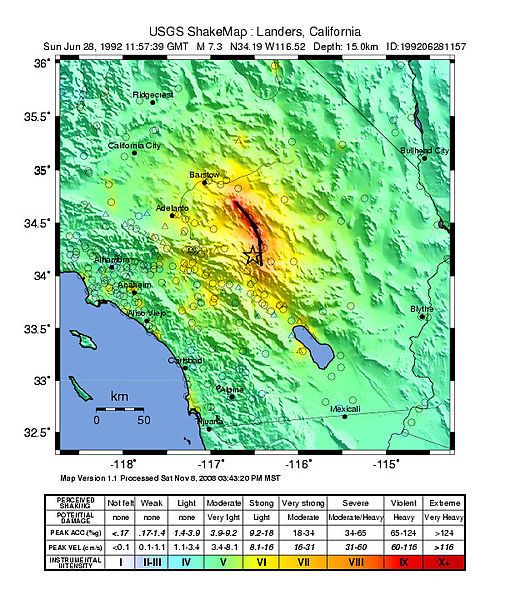
While there was some strong shaking in the Inland Empire, L.A. area, Orange County and San Diego area, all of the violent shaking, which causes severe damage, was in mostly unpopulated areas of the San Bernardino County desert. "Shakemap" by USGS and in public domain.
Even though the Landers Earthquake was a historically large, powerful earthquake, the epicenter was seemingly in "the middle of nowhere," and damage was mostly minor-to-moderate (if you were somebody who lived near the epicenter in "the middle of nowhere" it was, no doubt, not quite a good morning). The Big Bear Earthquake a little over three hours later, and a lot less powerful than the Landers' event, was in a more populated area, and thus more damage was caused despite it only being a moderate-size earthquake. The Northridge Earthquake vividly showed that it only takes a moderate-sized earthquake in an urban area to cause major damage. So, even though an earthquake may be quite large (and scary sounding to those around the country who only hear, "A 7.3 earthquake struck the L.A. area on Sunday morning"), if it is located in a very sparsely populated area very little property damage will be found. This, too, would be visibly illustrated following the 1999 Hector Mine Earthquake.
7 - The Landers Earthquake Happened One Year After The Sierra Madre Earthquake
Some people have forgotten about this earthquake, but on June 28, 1991, a M5.8 earthquake struck in the Angeles National Forest about 12 miles northeast of Pasadena in an event called, The Sierra Madre Earthquake. It is interesting and curious that some people have forgotten this event as this earthquake caused some major property damage in the Pasadena area, such as, windows shattering and brick-walls collapsing. One of this interesting things about this earthquake was for a quake of its size it had a small aftershock sequence.
No, despite these earthquakes occurring a year apart they are not related.

Probably the most noticeable damage following the 1992 earthquake was this bowling alley in Yucca Valley. Photograph taken by the National Oceanic and Atmospheric Administration and in public domain.
Waking Southern California up on a Sunday morning at 4:57 a.m. in the very busy year of 1992 here are seven interesting facts about the earthquake commonly known as, "The Landers Earthquake."
1 - It Still Remains The Last Largest Earthquake In California
It has been over 20 years and the Landers Earthquake was, according to the moment magnitude scale (M), a M7.3 earthquake, and (as of this writing) retains the record as being the last large earthquake, by way of magnitude, to hit California. Prior to the 1992 event the last large earthquake to hit California was the 1952 Kern County Earthquake, which occurred near Wheeler Ridge on the (thought to have been inactive) White Wolf Fault, and was M7.3. After the Landers Earthquake the next closest earthquake in magnitude size was the 1999 Hector Mine Earthquake at M7.1.
Even though this earthquake was rather big, it was not "The Big One." In fact, "The Big One" is expected to be M7.8-8.0.
As paleoseismology has shown this record held by the Landers Earthquake will likely be broken at some point.
2 - There Was A Lot Of Fault Involved
Rather, lot of faults were involved. The Landers Earthquake did not just rupture on one single fault-line, but rather ruptured on five separate fault-lines: Johnson Valley, Landers, Homestead Valley, Emerson, and Camp Rock Faults, according to the Southern California Earthquake Data Center (SCEDC).
3 - A New San Andreas Fault Could Be Opening Up
That is the theory, at least, from Lawrence Berkeley National Laboratory (LBL) geologist Pat Williams. According to the LBL article that came out in August 1992:
A theory that was posed in the aftermath of last month's earthquakes was that a new San Andreas fault could be opening up from the Salton Sea north to central California. Williams says instead that the recent activity has linked the Gulf of California with slip systems east of Mount Whitney, the 1872 site of one of California's three historic magnitude 8.0 earthquakes.
Williams' theory is that the strain is heading toward the back side of the Sierras, northeast into central Nevada, where it may affect active geothermal fields. The earth's movement could enhance the production of geothermal fluids by contributing to a thinning of the crust and allowing the fluids to circulate through complex fractures.
A huge strain response on a scale never seen before occurred during the 24 hours following the Landers earthquake. At the Pinion Flats Observatory researchers from UC San Diego observed a massive redistribution of strain deep in the earth's crust. For the first time, Williams says, scientists will be able to study not just how the upper 12 kilometers of brittle crust reacts, but the response of the deep crust beneath it.
This theory is still being debated among geological and seismologists circles, and, frankly, it will probably take a few more large earthquakes to see if this theory is correct. The earth sciences is sometimes a game of wait and see.
4 - Did You Feel The Foreshock?
At the time nobody knew it was a foreshock to the Landers Earthquake, and in fact, there was concern this might have been a foreshock to a San Andreas Fault event, and that was a M6.1 foreshock that hit about 11 miles east of Desert Hot Springs on April 23, 1992. The Earth Day earthquake caused a moderate amount of property damage in the Palm Springs area. As this earthquake, called the Joshua Tree Earthquake, rolled through to Los Angeles at 9:50 p.m. a Dodgers' game was going on and Vin Scully broadcast the the rolling motion happenings at Chavez Ravine.
There was concern this could be a foreshock to a San Andreas' event, and, according to the SCEDC, "A San Andreas Hazard Level B was declared following this quake, meaning that a 5 to 25% chance existed for an even larger earthquake happening along the San Andreas fault within 3 days."
This made for some big headlines in L.A. media, but by April 29, 1992, this earthquake and the threat of the San Andreas Fault unleashing its fury would be forgotten, at least for a little while.
This foreshock had its own foreshock, a M4.6, a little over two hours earlier.
5 - Was The Big Bear Earthquake Really An Aftershock?
This was the Big Bear Earthquake broadcast live on CNN to the country and parts of the world.
The short answer, no.
This is a report of the earthquakes from KTVU-TV, Oakland/San Francisco, which includes on-air coverage from KTTV-TV as the Big Bear Earthquake shook the KTTV/Fox 11 newsroom at the now gone Metromedia Square in Hollywood.
At 8:05 a.m. on that Sunday morning a lot of people were already up and had already felt quite a few aftershocks, but one the largest, and probably most damaging, earthquake that morning was the Big Bear Earthquake. It was originally thought the M6.5 Big Bear Earthquake was simply an aftershock, and having an aftershock of that size following such a large earthquake is not unusual. However, as later research showed, the Big Bear event was not an aftershock of the Landers Earthquake. Rather, that earthquake in the San Bernardino Mountains was apart of a "regional earthquake sequence," according to the United States Geological Survey (USGS).
6 - Location And Magnitude

While there was some strong shaking in the Inland Empire, L.A. area, Orange County and San Diego area, all of the violent shaking, which causes severe damage, was in mostly unpopulated areas of the San Bernardino County desert. "Shakemap" by USGS and in public domain.
Even though the Landers Earthquake was a historically large, powerful earthquake, the epicenter was seemingly in "the middle of nowhere," and damage was mostly minor-to-moderate (if you were somebody who lived near the epicenter in "the middle of nowhere" it was, no doubt, not quite a good morning). The Big Bear Earthquake a little over three hours later, and a lot less powerful than the Landers' event, was in a more populated area, and thus more damage was caused despite it only being a moderate-size earthquake. The Northridge Earthquake vividly showed that it only takes a moderate-sized earthquake in an urban area to cause major damage. So, even though an earthquake may be quite large (and scary sounding to those around the country who only hear, "A 7.3 earthquake struck the L.A. area on Sunday morning"), if it is located in a very sparsely populated area very little property damage will be found. This, too, would be visibly illustrated following the 1999 Hector Mine Earthquake.
7 - The Landers Earthquake Happened One Year After The Sierra Madre Earthquake
Some people have forgotten about this earthquake, but on June 28, 1991, a M5.8 earthquake struck in the Angeles National Forest about 12 miles northeast of Pasadena in an event called, The Sierra Madre Earthquake. It is interesting and curious that some people have forgotten this event as this earthquake caused some major property damage in the Pasadena area, such as, windows shattering and brick-walls collapsing. One of this interesting things about this earthquake was for a quake of its size it had a small aftershock sequence.
No, despite these earthquakes occurring a year apart they are not related.
